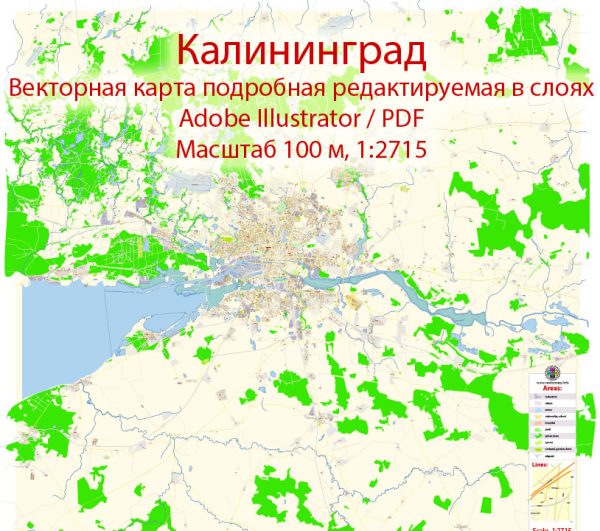Kaliningrad is a Russian exclave located on the Baltic Sea, nestled between Poland to the south and Lithuania to the north and east. Here is a detailed description of the city:
Geography:
- Location: Kaliningrad is situated in the westernmost part of Russia, on the Baltic Sea.
- Exclave Status: It is an exclave, meaning it is separated from the main territory of Russia and is not contiguous with the rest of the country.
- Borders: The city is surrounded by Poland to the south and Lithuania to the north and east, with the Baltic Sea to the west.
History:
- Formerly Königsberg: The city was originally known as Königsberg and was the capital of East Prussia. It has a rich history dating back to the medieval times.
- World War II: Königsberg suffered significant damage during World War II, particularly during the Battle of Königsberg in 1945.
- Post-War Changes: After the war, the city was annexed by the Soviet Union, and its German population was expelled. It was then renamed Kaliningrad in 1946 in honor of Mikhail Kalinin, a Soviet political figure.
Culture and Architecture:
- Architectural Heritage: Despite the destruction during the war, some historic buildings have been preserved or reconstructed. The city features a mix of Soviet-era architecture and remnants of its German past.
- Cultural Institutions: Kaliningrad has museums, theaters, and cultural institutions that showcase its history and contribute to the cultural life of the city.
Economy:
- Strategic Location: Kaliningrad’s location on the Baltic Sea gives it strategic importance for trade and transportation.
- Economic Development: The city has seen economic development, with industries such as amber processing, fishing, and manufacturing playing a role in its economy.
Transportation:
- Transport Hubs: Kaliningrad is well-connected by road, rail, and sea. It has an international airport, Khrabrovo Airport, which facilitates air travel to and from the region.
- Ports: The city has several ports along the Baltic Sea, contributing to its significance as a maritime hub.
Education and Research:
- Universities: Kaliningrad is home to several universities and research institutions that contribute to education and scientific advancements in the region.
Tourism:
- Tourist Attractions: The city attracts tourists with its historical sites, including the Königsberg Cathedral, the Kant Island, and the Amber Museum.
- Baltic Sea Resorts: The proximity to the Baltic Sea also makes Kaliningrad a destination for those seeking coastal resorts and recreational activities.
Russian Military Presence:
- Military Bases: Due to its strategic location, Kaliningrad houses Russian military bases, including the Baltic Fleet, which adds a geopolitical dimension to the region.
Kaliningrad is a unique and historically rich city that reflects a blend of German and Russian influences, making it an intriguing destination for history enthusiasts and those interested in exploring diverse cultural landscapes.
Vectormap.Net provide you with the most accurate and up-to-date vector maps in Adobe Illustrator, PDF and other formats, designed for editing and printing. Please read the vector map descriptions carefully.


 Author: Kirill Shrayber, Ph.D.
Author: Kirill Shrayber, Ph.D.